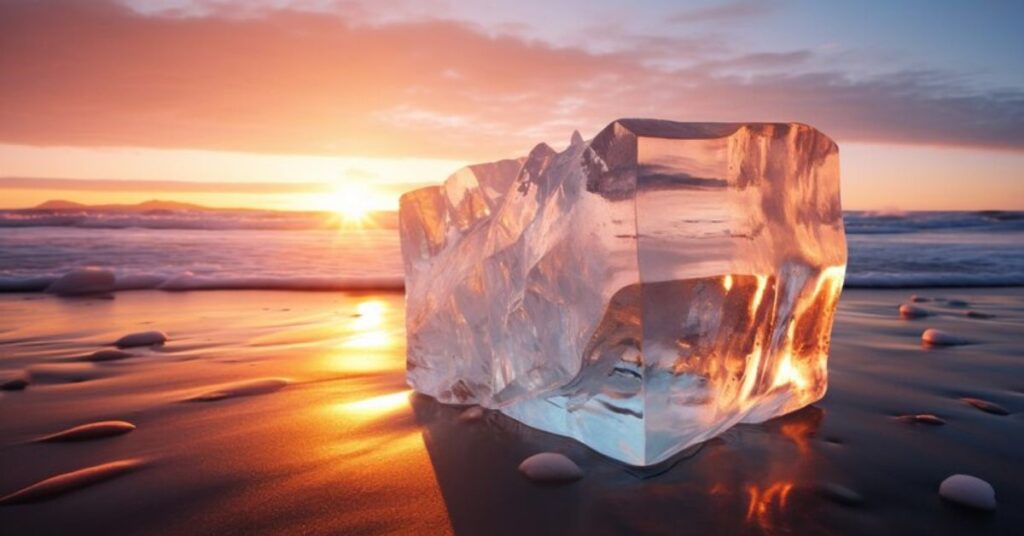Icy crystals contain a universe of wonder and intricacy despite their apparently plain look. Icy crystals are everywhere; from the little snowflake to the massive glaciers that change the face of our planet, they are essential. This article delves into the intriguing world of ice crystals, discussing their creation, characteristics, natural importance, uses, difficulties, and potential future research prospects.
What are icy crystals?
Icy crystals are solid forms of water molecules arranged in a highly ordered structure. They encompass a wide range of formations, from intricate snowflakes to massive icebergs. Understanding their nature and behavior is crucial for various scientific, technological, and environmental reasons.
importance of understanding icy crystals
Understanding icy crystals is essential for predicting weather patterns, studying climate change, designing efficient cooling systems, and exploring extraterrestrial environments. Moreover, icy crystals hold cultural and recreational significance, shaping human experiences in various ways.
Conditions required for formation
Icy crystals form under specific temperature and humidity conditions. The intricate process involves nucleation, where water molecules arrange themselves into crystalline structures, followed by crystal growth.
Types of icy crystals
There are various types of icy crystals, each exhibiting unique shapes and properties. Common forms include hexagonal snowflakes, columnar crystals, and dendrites. The diversity of icy crystals arises from differences in atmospheric conditions during their formation.
Structure and composition
Icy crystals possess a crystalline lattice structure, with water molecules arranged in repeating patterns. The arrangement of molecules determines the crystal’s shape and properties. Impurities and air bubbles within the crystal lattice can affect its clarity and strength.
Optical properties
The optical properties of icy crystals give rise to phenomena such as light refraction, reflection, and scattering. These properties contribute to the mesmerizing appearance of icy landscapes and play a crucial role in atmospheric optics.
Physical properties
Icy crystals exhibit various physical properties, including hardness, density, and thermal conductivity. These properties influence how they interact with their surroundings and affect processes such as ice melting, glacier movement, and snowpack formation.
In atmospheric phenomena
Icy crystals play a central role in atmospheric phenomena such as cloud formation, precipitation, and the formation of halos and arcs. Understanding their behavior is essential for predicting weather patterns and studying climate dynamics.
Impact on climate
The presence of icy crystals in the atmosphere influences Earth’s energy balance, affecting global climate patterns. Changes in the distribution and properties of icy crystals can lead to shifts in precipitation patterns, sea level rise, and alterations in regional climates.
Influence on ecosystems
Icy crystals shape terrestrial and aquatic ecosystems by influencing water availability, habitat structure, and nutrient cycling. Glacial meltwater sustains numerous ecosystems, while seasonal snow cover provides insulation and moisture for plant growth.
Scientific research
Icy crystals serve as valuable subjects for scientific research, providing insights into fundamental principles of crystal growth, phase transitions, and materials science. Researchers study icy crystals to advance our understanding of physical processes in diverse environments.
Technological applications
The unique properties of icy crystals find applications in various technological fields, including refrigeration, cryopreservation, and ice manufacturing. Advances in ice engineering and materials science contribute to the development of innovative technologies.
Recreational activities
Icy crystals inspire a range of recreational activities, from winter sports like skiing and ice skating to artistic pursuits such as ice sculpting and photography. Their aesthetic appeal and ephemeral nature captivate people of all ages and cultures.
Studying icy crystals in extreme environments
Studying icy crystals in extreme environments, such as polar regions and outer space, poses significant challenges due to harsh conditions and limited accessibility. However, advancements in remote sensing and robotic exploration offer new opportunities for research.
Mitigating negative impacts
The melting of icy crystals, driven by climate change and human activities, poses threats to ecosystems, infrastructure, and livelihoods. Mitigating these impacts requires concerted efforts to reduce greenhouse gas emissions and adapt to changing conditions.
Advancements in understanding and utilizing icy crystals
Continued research into the fundamental properties and behaviors of icy crystals holds promise for addressing pressing societal challenges. By harnessing our understanding of icy crystals, we can develop sustainable solutions for water management, energy production, and environmental conservation.
Conclusion
Icy crystals are a fascinating example of how beauty, practicality, and science come together. For ages, their complex architecture and wide range of characteristics have captivated and astounded people. We can learn more about how the natural world functions and open doors to new possibilities for exploration and innovation if we can decipher the secrets of ice crystals.
FAQs
Are all icy crystals the same?
No, icy crystals come in various shapes and sizes, depending on the conditions under which they form. Factors such as temperature, humidity, and atmospheric pressure influence their characteristics.
How do icy crystals affect weather patterns?
Icy crystals play a crucial role in the formation of clouds and precipitation. Changes in the distribution and properties of icy crystals can lead to shifts in weather patterns, including changes in rainfall, snowfall, and storm intensity.
Can icy crystals be artificially created?
Yes, scientists can create icy crystals in laboratory settings by controlling temperature, pressure, and humidity conditions. Artificially produced icy crystals are used in various scientific experiments and technological applications.
What is the significance of studying icy crystals in outer space?
Studying icy crystals in outer space provides insights into the formation and evolution of planetary bodies, such as comets, asteroids, and moons. Understanding the properties of icy crystals in extraterrestrial environments informs our understanding of the solar system’s history and potential for life.
How do icy crystals contribute to climate change?
The melting of icy crystals, such as glaciers and sea ice, contributes to rising sea levels, alterations in ocean circulation patterns, and changes in global climate dynamics. Understanding the processes driving ice loss is essential for mitigating the impacts of climate change on vulnerable ecosystems and communities.







